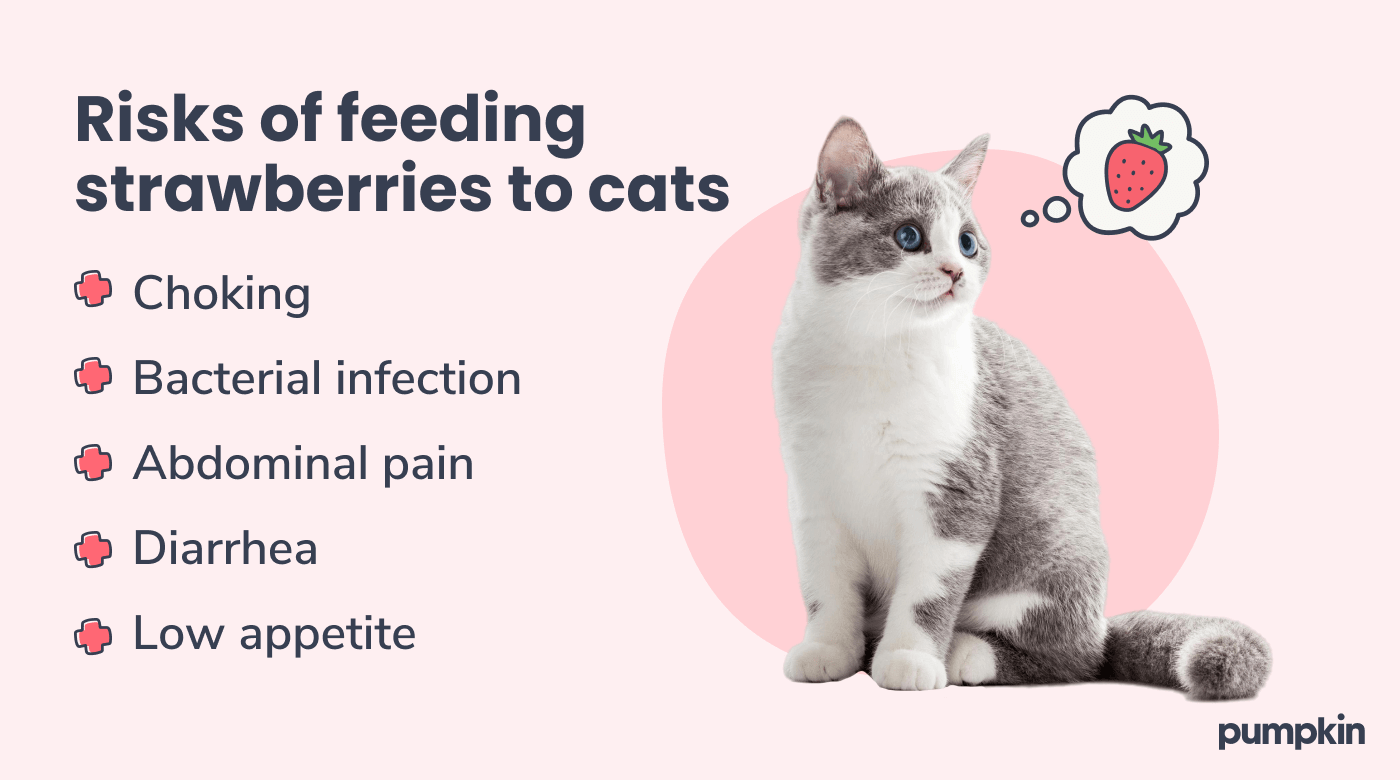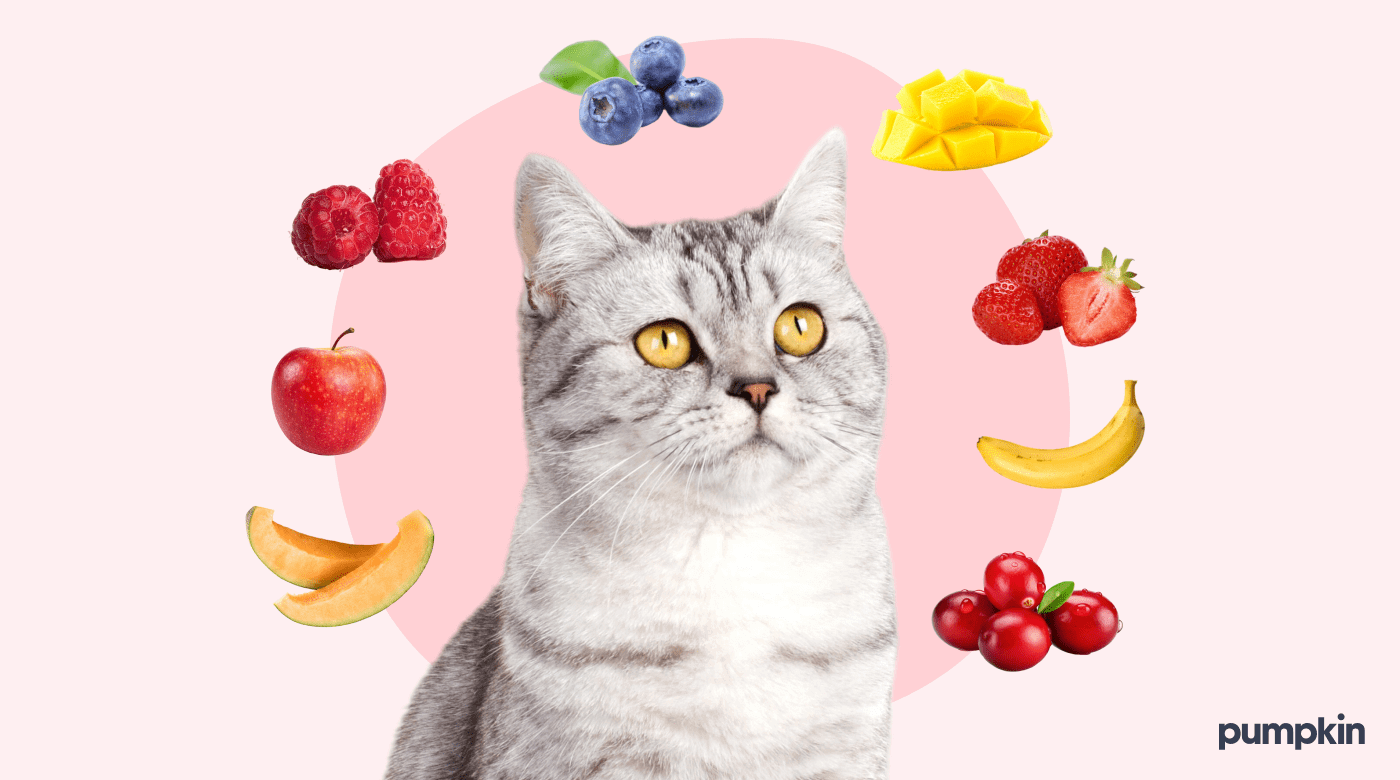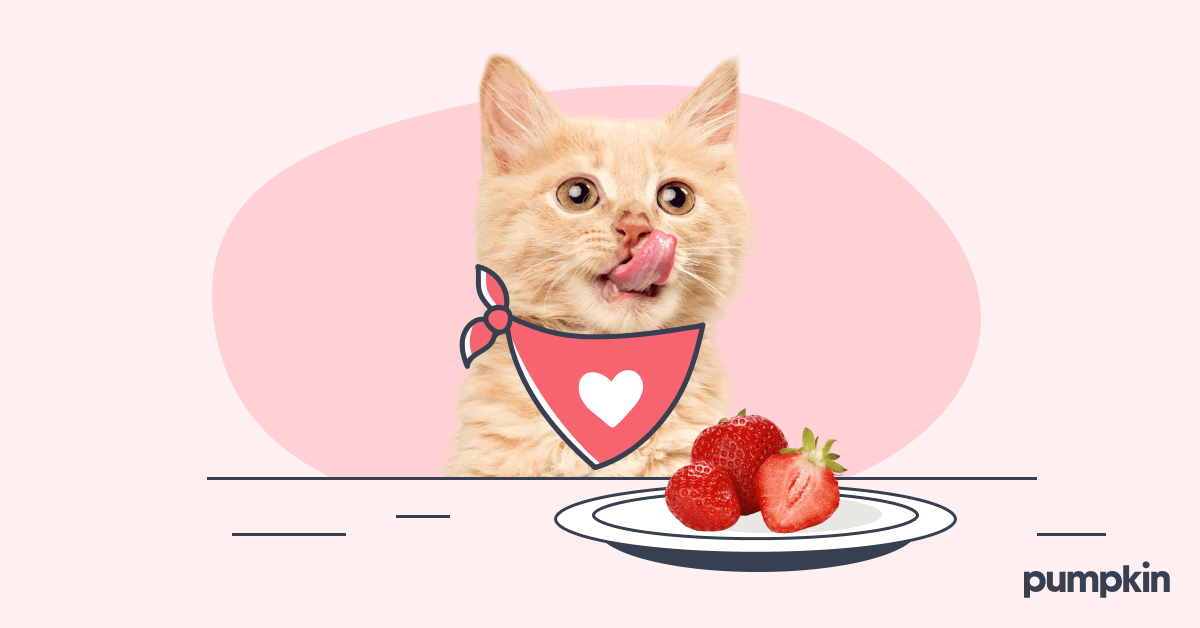Key Points:
- Strawberries are non-toxic to cats and generally safe for them to eat.
- Carnivorous cats did not evolve to digest plants, and so strawberries should be a treat rather than a regular part of their diet.
- One or two berries cut into small pieces is the perfect amount for the average cat.
Sweet, juicy strawberries are a summer favorite on many tables. Not only do we love them, but it’s also fun to share our favorite fruits with our pets. Since dogs can eat strawberries, you may wonder if your more discerning cat will enjoy these treats, too. After all, dogs will eat anything, but it’s hard to imagine your kitty chowing down on a sock or literal trash.
So, can cats eat strawberries?
The short answer is yes, your cat can eat strawberries, but you shouldn’t serve up a bowl of strawberries at dinnertime. Before your cat samples a strawberry, you need to know whether this fruit offers any health benefits, the risks involved, and how to prepare them safely.
Are strawberries good for cats?
Strawberries offer fantastic health benefits for humans, and they are somewhat healthy for cats.
One cup of halved strawberries includes:
- 49 calories
- 0.5 grams fat
- 1 gram protein
- 3 grams of fiber
- 7.4 grams sugar
- 11.7 grams carbohydrates
- 89.4 mg vitamin C
- 233 mg potassium
Strawberries are also filled with powerful antioxidants that boost your cat’s immune system, plus fiber to support healthy digestion. They’re low in calories, and with 91% water content, are one of the most hydrating foods you can feed your cat. They also have less sugar than a lot of other fruits, like mangoes and grapes.
Strawberries contain essential vitamins and minerals such as vitamins A, B6, and C, as well as manganese, folate, potassium, and magnesium. These nutrients help with everything from protecting the nervous system to reducing inflammation and supporting cellular health. Unfortunately, since cats’ digestive systems evolved to extract nutrients from meat, they won’t get the full benefits of these plant-based nutrients.
If your cat likes the taste of strawberries, it’s okay to give them a nibble as a treat. However, since feline nutritional needs are so different from humans, strawberries shouldn’t play a leading role in your cat’s diet.
Nutritional needs of cats
Cats are obligate carnivores, meaning they get their nutrients from animal products such as meat and fish. That means the bulk of a cat’s diet should contain protein and fat. They only need a small amount of carbohydrates for a balanced diet.
Strawberries consist mostly of water with some carbohydrates and a tiny amount of fat and protein. So, they belong in the treat category — something special for your cat to enjoy outside of their normal diet. Treats should not exceed 10% to 15% of the calories a cat consumes, so keep this in mind when deciding how many strawberries your pet can have.
What are the risks of feeding strawberries to cats?
Before you spruce up your cat’s fancy feast with a few berry slices, you should know a few minor risks.

Strawberries can pose choking hazards if they aren’t cut into small enough pieces for your cat to manage. Contamination from bacteria or other toxins may also affect your cat’s digestion if the berries aren’t washed properly.
Also, since cats don’t digest carbohydrates well, high amounts can trouble their digestive system. You might need to visit your vet if you see any signs of abdominal pain, diarrhea, constipation, or low appetite after your cat eats strawberries.
If your cat is overweight, talk to your vet before adding any type of sugary treat to their diet. You don’t want to indulge an already-plump kitty with too much of nature’s candy because of the natural sugars found in fruit.
Diabetes in cats can also develop with the wrong diet. If your cat eats too many treats or food, they may gain weight or end up with issues processing glucose properly.
Consult your veterinarian if you notice weight gain or these other signs of diabetes:
- Excess thirst
- Frequent urination
- Weight loss despite normal to increased appetite
- Inability to jump
- Vomiting or upset stomach
Allergies aren’t common but can occur when cats eat new foods. The signs of an allergic reaction will occur shortly after ingestion and include:
- Runny nose and sneezing
- Coughing or wheezing
- Itchy, watery eyes and nose
- Itchy skin or rash
- Vomiting
- Diarrhea
Itching that erupts around the head and neck area is one of the most common signs of an allergy. If you notice your cat asking for extra scratches or focusing on this area, it’s time to put the berry feeding on pause and visit your vet.
How to safely feed your cat a strawberry
Cats don’t have the sweet receptors that other mammals have, and so not all cats will be interested in eating sugary treats. Your kitty might put up their nose when you offer them a berry.
But if they do seem interested, or if you’ve got them licking syrup or other sweets off your dinner plate, you can safely feed your cat a berry by:
- Washing the strawberries to remove any traces of pesticides or fertilizer.
- Removing the stems and leaves.
- Cutting the berries into small pieces (about the size of your cat’s kibble) to avoid a choking hazard.
How many strawberries can you share with your kitty?
A typical 10-pound cat should have between 240 and 270 calories a day. That means their treat allowance (about 10%) would be 24 calories. For reference, one medium strawberry contains about four calories. However, six strawberries (about 24 calories) will contain too much sugar, carbohydrates, and plant material for your cat’s digestive system. One or two sliced berries will be plenty.
Are strawberries safe for kittens?
Strawberries don’t contain anything toxic for kittens. However, you should talk to your vet before introducing new foods to your kitten’s diet just to play it safe.
Also, when feeding a strawberry to a young cat, dice the berry into extra small pieces so they can comfortably enjoy their fruit without the risk of choking.
Following a kitten feeding chart can help you figure out how much food to give your pet and provide your kitten with a healthy start in life. Having kitten insurance can also help you afford the best care for your new kitty. With pet insurance you feel good about, you can rest assured all your eligible costs are covered in case of a future accident or illness.
What other fruits are safe for cats?
Strawberries aren’t the only healthy treat you can feed your cat. Several other fruits can add hydration, fiber, and a nutrient boost while spicing up your cat’s menu.

If your cat doesn’t like strawberries, you can try:
- Apples
- Bananas
- Blueberries
- Cantaloupe
- Mangos
What about vegetables?
Several vegetables are safe for cats (and they might even enjoy the crunch.) These include:
- Broccoli
- Carrots
- Celery
- Peas
- Pumpkin
- Spinach
The bottom line: Cats and strawberries
While it’s safe to offer your cat a bite of strawberry, they might not be interested. However, if your cat does have a bit of a sweet tooth, you can offer them strawberries as an occasional snack.
Still, since cats don’t need plant nutrients, a healthy protein-rich snack would be a better bet, like a piece of unseasoned fish or meat or commercial cat treats.
FAQs
- https://fdc.nal.usda.gov/fdc-app.html#/food-details/167762/nutrients
- https://www.scientificamerican.com/article/why-cats-taste-no-sweets/
- https://cdn.agclassroom.org/media/uploads/LP857/Strawberry_Nutrition_Facts_.pdf
- https://www.healthline.com/nutrition/19-hydrating-foods#TOC_TITLE_HDR_3
- https://www.medicalnewstoday.com/articles/fruit-with-the-highest-sugar
- https://pubmed.ncbi.nlm.nih.gov/24450925/
- https://www.vet.cornell.edu/departments-centers-and-institutes/cornell-feline-health-center/health-information/feline-health-topics/feeding-your-cat
- https://wsava.org/wp-content/uploads/2020/07/Calorie-Needs-for-Healthy-Adult-Cats-updated-July-2020.pdf
- https://www.vet.cornell.edu/departments-centers-and-institutes/cornell-feline-health-center/health-information/feline-health-topics/food-allergies




